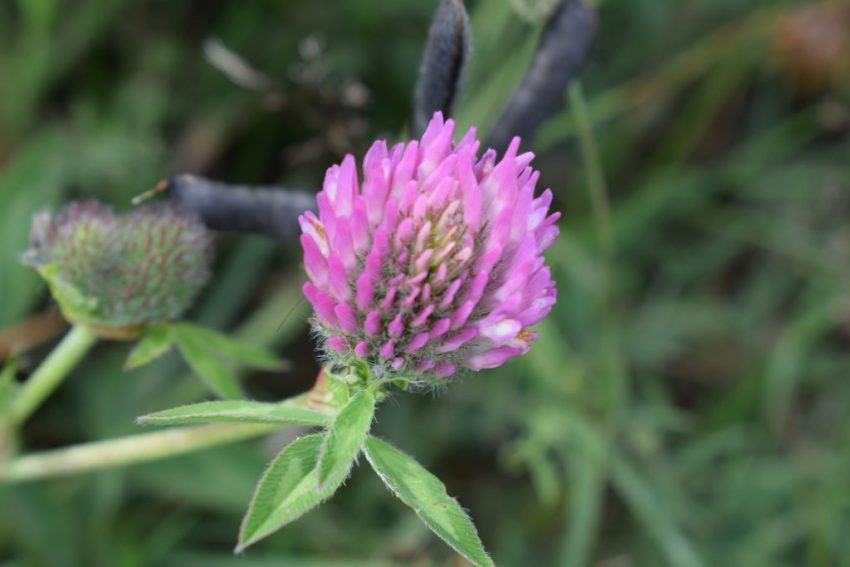Identifying Clovers found in the South
Clovers are a legume which has many forms, with flowers in shades of red and pink through white and yellow. They have globular (ball shaped) flowers and trifoliate leaves (split into three leaflets). Red clover, Trifolium pratense, and White clover, Trifolium repens, are so common round here that I realise I have hardly photographed them. I will list Trefoils, which are also in the genus Trifolium and have smaller flowers, separately.
Red clover – Trifolium pratense
Red clover is about 10 to 40cm tall and is often found in grass, its height dependent on soil nutrients, competition and mowing regime. The one in the photo below, spotted in long grass near Reculver in Kent, was more blousy than previous samples I had seen so checked the ID. I was confident it was a Trifolium, and as you can see in the image, the leaves have a distinctive white mark and a little purple veining. It can be distinguished from the other two likely pinkish clovers: Zigzag clover, Trifolium medium, is darker and the flower heads have a clear stalk; Sea clover, Trifolium squamosum, seemed to be generally paler than my flower, without markings on the leaves.
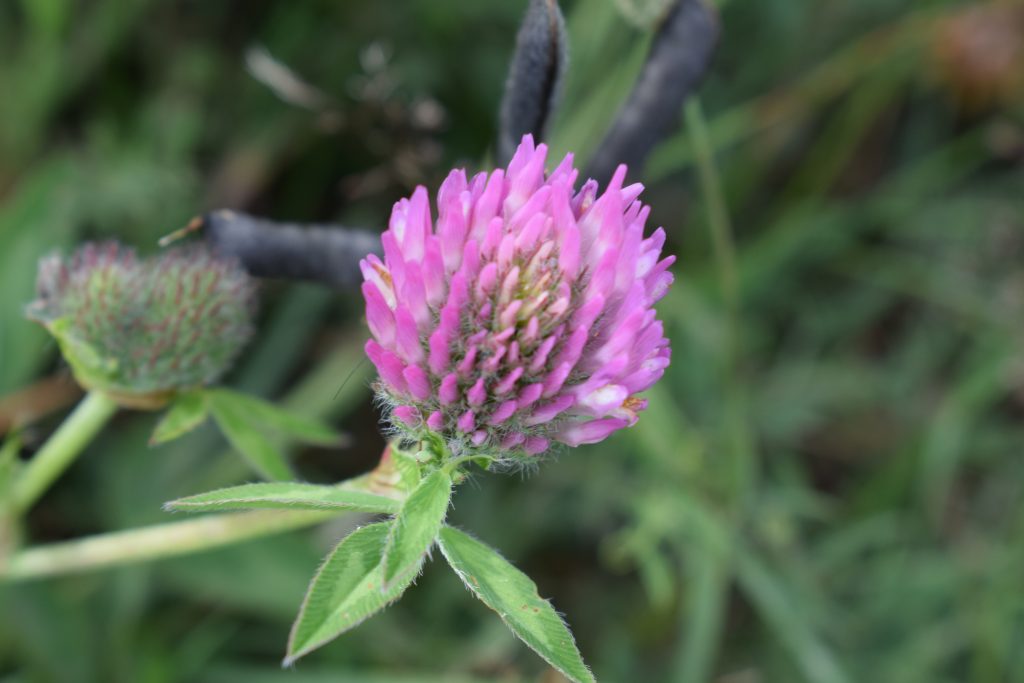
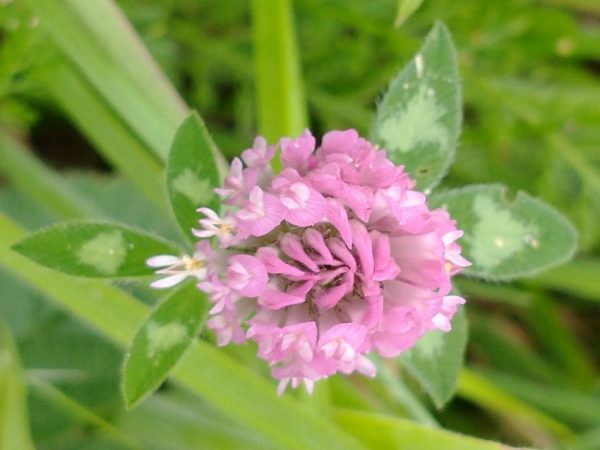
White clover – Trifolium repens
White clover is shorter than the red clover and has a creeping nature, being most commonly found in lawns. It has distinctive chevron shaped markings on the leaf similar to red clover. The flowers are held on a relatively long stalk, sometimes with a pink tinge, and tend to reflex downwards on pollination. It is often sown as a forage for ruminants. The photo below shows its creeping habit, growing in gravel at Sovereign Harbour Eastbourne on my walk with the Wildflower Society.
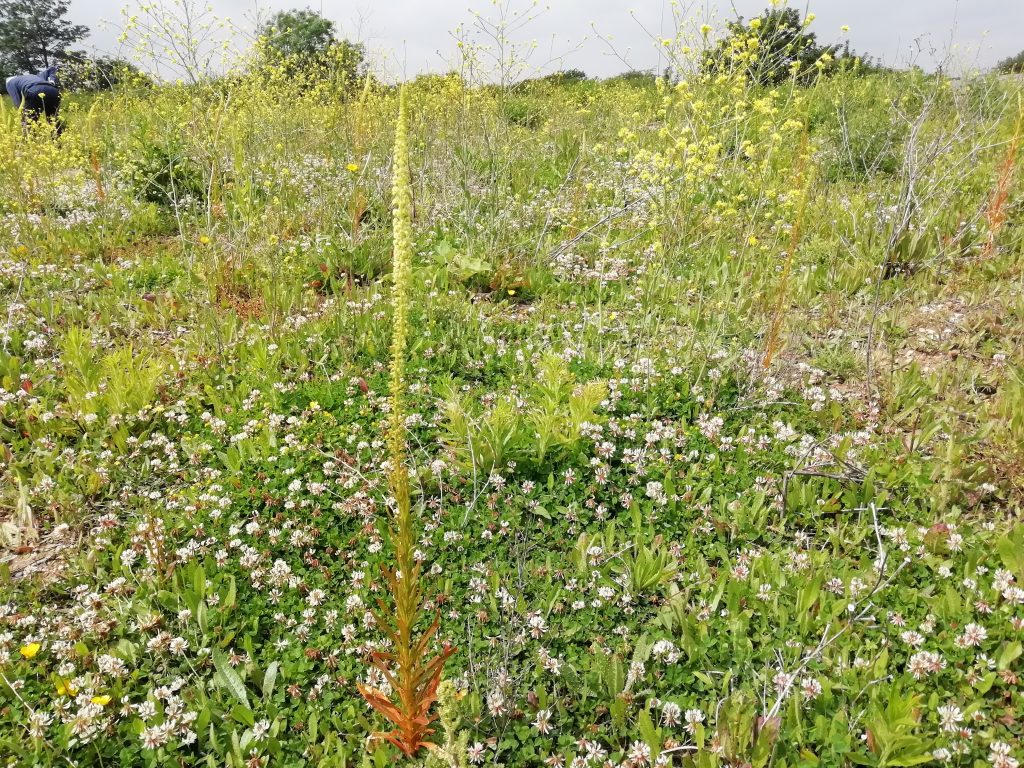
The two photos below show closeups of the flowers I took in a field of short grass in Pett, Sussex.
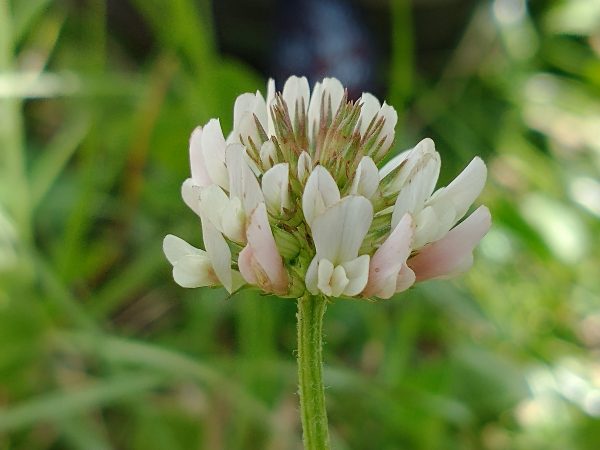
In this photo, some chevrons can be seen on the surrounding foliage. You can see some downward pointing flowers too.
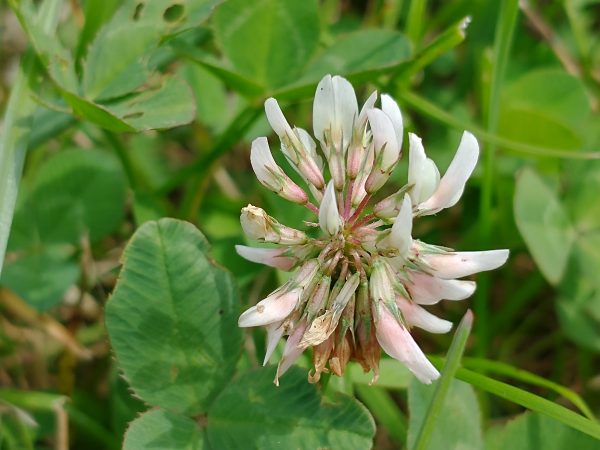
Subterranean clover – Trifolium subterraneum
I spotted this little beauty while visiting Camber Castle in Rye Harbour nature reserve. I am confident about the ID as it has been mentioned in that spot before. The tiny white flowers were only a few millimetres long and were in threes. The leaves were very hairy.
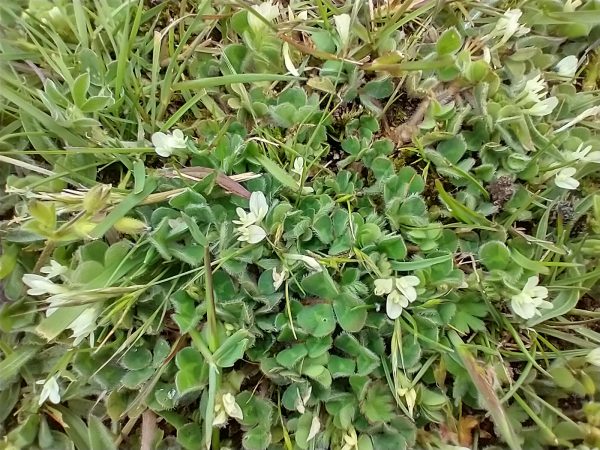
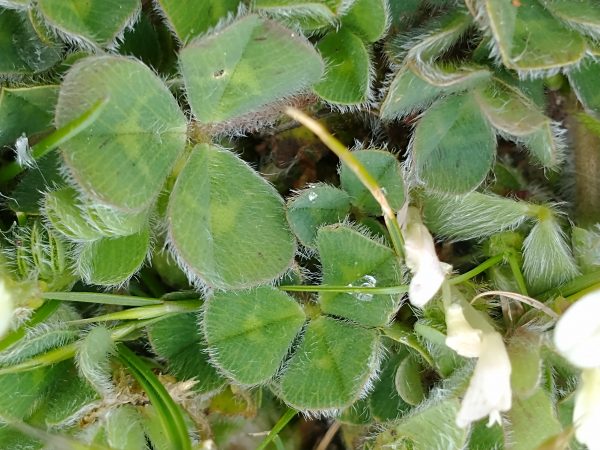
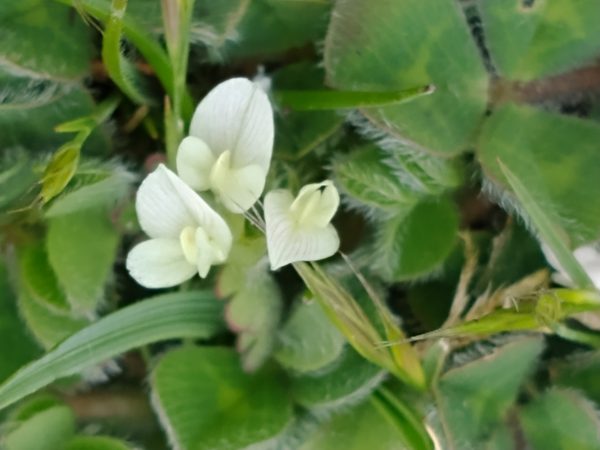
Alsike clover – Trifolium hybridum
I spotted this for the first time in an arable setting at Rathfinny Wine Estate in Seaford in July. It is used as a green manure as the roots fix nitrogen from the atmosphere. It was tall for a clover at 20cm and much more robust to look at than White clover. I thought the flower was really pretty, with more pink than Trifolium repens and about 2 cm across. As you can see from the pics, the solitary flower comes out of the leaf axil. You can just about see the long, pointed stipules in the pics (the appendage at the base of the leaf stalk).
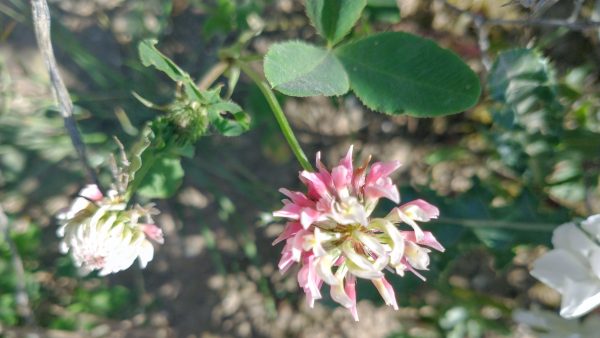
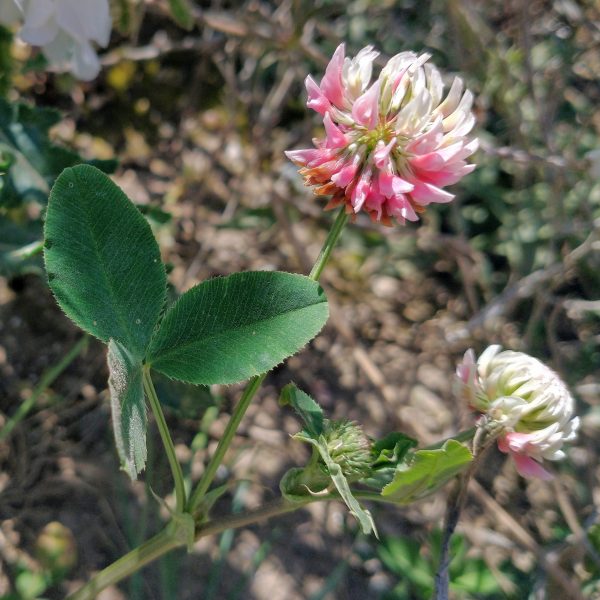
Over the coming months I hope to add more species of Clover to this page. Trifolium also includes Trefoils such as Hop Trefoil Trifolium campestre which will have their own page.
I have tagged blog posts mentioning Clover – Trifolium with Clover or Trifolium
eg. https://photographingwildflowers.co.uk/tag/clover/

